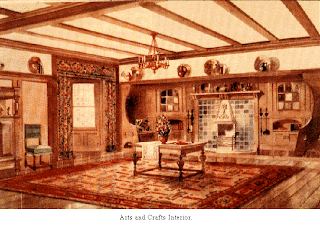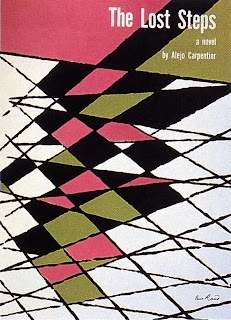The Arts and Crafts Movement
The Arts and Crafts movement was developed in England in the late 19th century. It soon had been taken up by American designers, which cane with different results.
The Arts and Crafts movement had challenged the Victorian era greatly, with their style and tastes. “This movement was inspired by the social reform concerns of thinkers such as Walter Crane and John Ruskin, together with the ideals of reformer and designer, William Morris.” (http://char.txa.cornell.edu)
Crane, Ruskin and Morris all had a great idea of a good society, which brought them to have great design skills. They had a vision of a society in which the worker was not brutalized by the working conditions found in factories, but rather could take pride in his craftsmanship and skill.

“The rise of a consumer class coincided with the rise of manufactured consumer goods. In this period, manufactured goods were often poor in design and quality. Ruskin, Morris, and others proposed that it would be better for all if individual craftsmanship could be revived-- the worker could then produce beautiful objects that exhibited the result of fine craftsmanship, as opposed to the shoddy products of mass production. Thus the goal was to create design that was... " for the people and by the people, and a source of pleasure to the maker and the user." Workers could produce beautiful objects that would enhance the lives of ordinary people, and at the same time provide decent employment for the craftsman.” (http://char.txa.cornell.edu)

“The British movement derived its philosophical underpinnings from two important sources: first, the designer A. W. N. Pugin (1812–1852), whose early writings promoting the Gothic Revival presaged English apprehension about industrialization, and second, theorist and art critic John Ruskin (1819–1900), who advocated medieval architecture as a model for honest craftsmanship and quality materials. Ruskin's persuasive rhetoric influenced the movement's figurehead (and ardent socialist) William Morris (1834–1896), who believed that industrialization alienated labor and created a dehumanizing distance between the designer and manufacturer. Morris strove to unite all the arts within the decoration of the home, emphasizing nature and simplicity of form.
The American Arts and Crafts movement was inextricably linked to the British movement and closely aligned with the work of William Morris and the second generation of architect-designers, including Charles Robert Ashbee (1863–1942), who toured the United States, and Charles Francis Annesley Voysey (1857–1941)”. (http://www.metmuseum.org/toah/hd/acam/hd_acam.htm)
Unlike in England, the undercurrent of socialism of the Arts and Crafts movement in the United States did not spread much beyond the formation of a few Utopian communities.
In urban centres, socialist experiments were undertaken on a community level, frequently in the form of educating young women. Ideas of craftwork and simplicity manifested themselves in decorative work, including the metalwork and pottery of the Arts and Crafts movement. Schools and training programs taught quality design, a cornerstone of the Arts and Crafts movement.
“The medieval crafts guilds were groups of artists, architects, and craftsmen who formed an alliance to maintain high standards of workmanship, regulate trade and competition, and protect the secrets of their crafts. The guilds were usually composed of smaller workshops of associated crafts from the same town who banded together into larger groups for their own protection and prosperity.” (http://www.artyfactory.com/art_appreciation/graphic_designers/william_morris/william_morris.html)
The members of the Arts and Crafts Movement formed themselves into crafts guilds, based on the medieval examples, in order to encourage high standards of design and provide a supportive working environment. They gave themselves names such as the Century Guild, the Guild of Saint George, the Art Workers Guild and the Guild of Handicraft. The Arts and Crafts Movement had also raised the status of design in art education and established it as an essential element in the manufacturing process.
This
provided a model for the ideal craft production system. Aesthetic ideas were
also borrowed from Medieval European and Islamic sources. Japanese ideas were
also incorporated early Arts and Crafts forms. The forms of Arts and Crafts
style were typically rectilinear and angular, with stylized decorative motifs
reminiscent of medieval and Islamic design.
The
Arts and Crafts Movement was a reaction against the poor quality of design during
the Industrial Revolution and the members of the movement believed that the
growth of industry had destroyed traditional skills and removed the pride that
a craftsman could find in his work.
“Despite
its high ideals, the Arts and Crafts Movement was essentially flawed. Their
opposition to modern methods of production and the tendency to look back to the
medieval world, rather than forward to a progressive era of complete
mechanisation, was what eventually sounded the death knell of the movement. They
could only fail in their socialist ideal of producing affordable quality
hand-crafted design for the masses as the production costs of their designs
were so high that they could only be purchased by the wealthy. Also, any
movement which continually looks to the past for its inspiration must have a
limited life span. There are only so many ways you can reinterpret the past
without becoming repetitive.
However, the greatest legacy of the Arts and Crafts movement was
their understanding of the relationship between design and our quality of life.
This set the example for others who would later attempt to use the power of
industrial mass production in the service of good design. “ (http://www.artyfactory.com/art_appreciation/graphic_designers/william_morris/william_morris.html)

William Morris was one of the Arts and Crafts Movement, and he
was mainly known as a designer of patterns for wallpaper and textiles. William
Morris was also an artist, designer, printer, typographer, bookbinder,
craftsman, poet, writer and champion of socialist ideals, but although he is
famous for his wallpaper designs, he also founded the Kelmscott Press which
published high quality hand bound books and was very influential in the revival
of the private press. Morris believed that the
art and design of his own time was inferior and unworthy. He felt that this was
due to the poor quality of life during the Industrial Revolution.
“Nature is the perfect example of God's design”- says Morris. He
says this because he believes that all designs should be based on nature
because he sees it as the spiritual remedy to the inferior standards of art and
design during the Industrial Revolution.
The Arts and Crafts Movement raised the status of design in art
education and established it as an essential element in the manufacturing
process.
The Arts and Crafts
movement influence other art movements such as the Bauhaus and Modernism,
movements that believed in simplicity of design. Bauhaus and modernism believed
in design and manufacture that the general public could afford. They also
believed that simple functional designs should look good and be aesthetically
pleasing. Manufactured products should be enjoyed for the way they looked and
not only for their functional application.























































